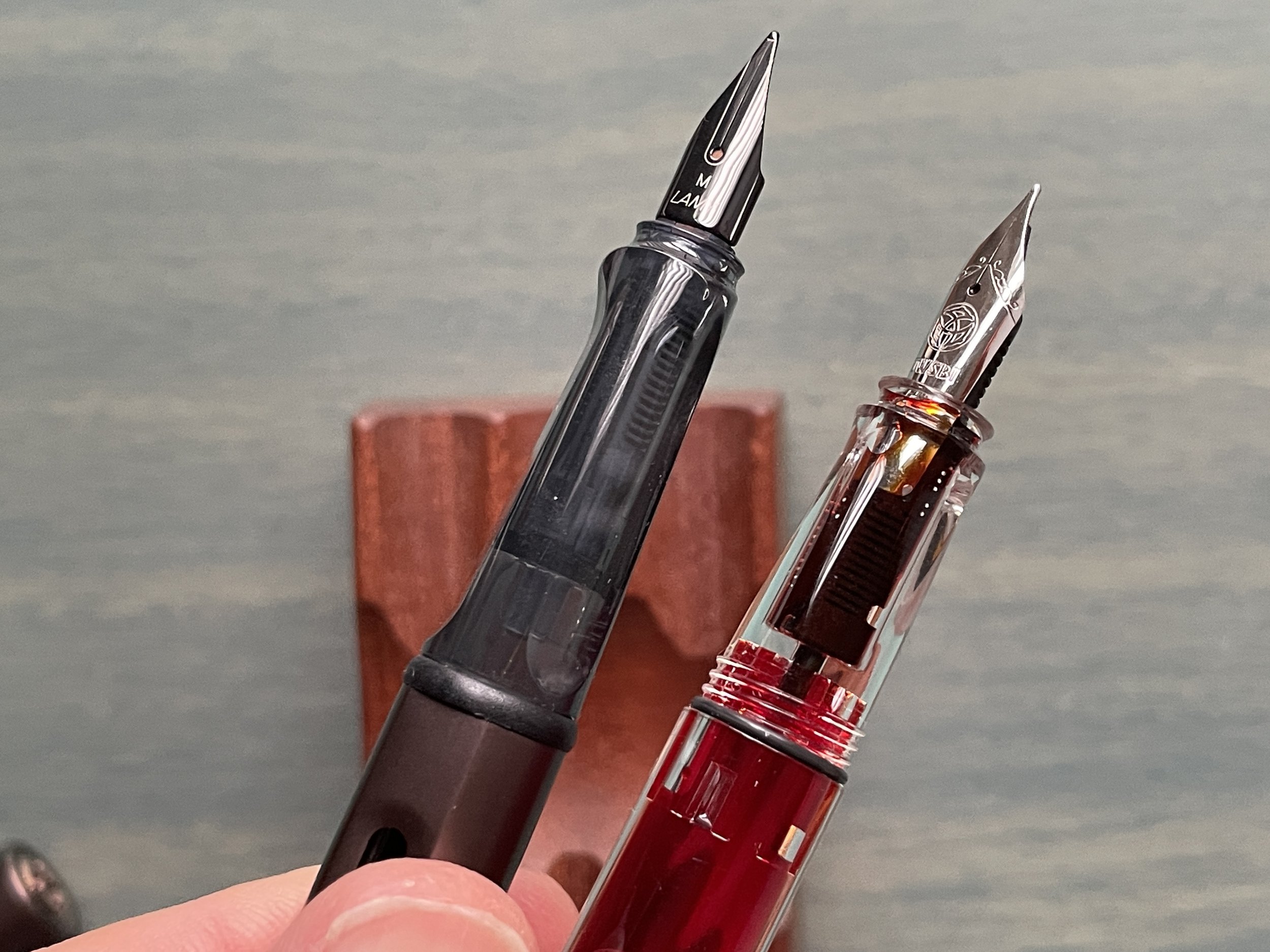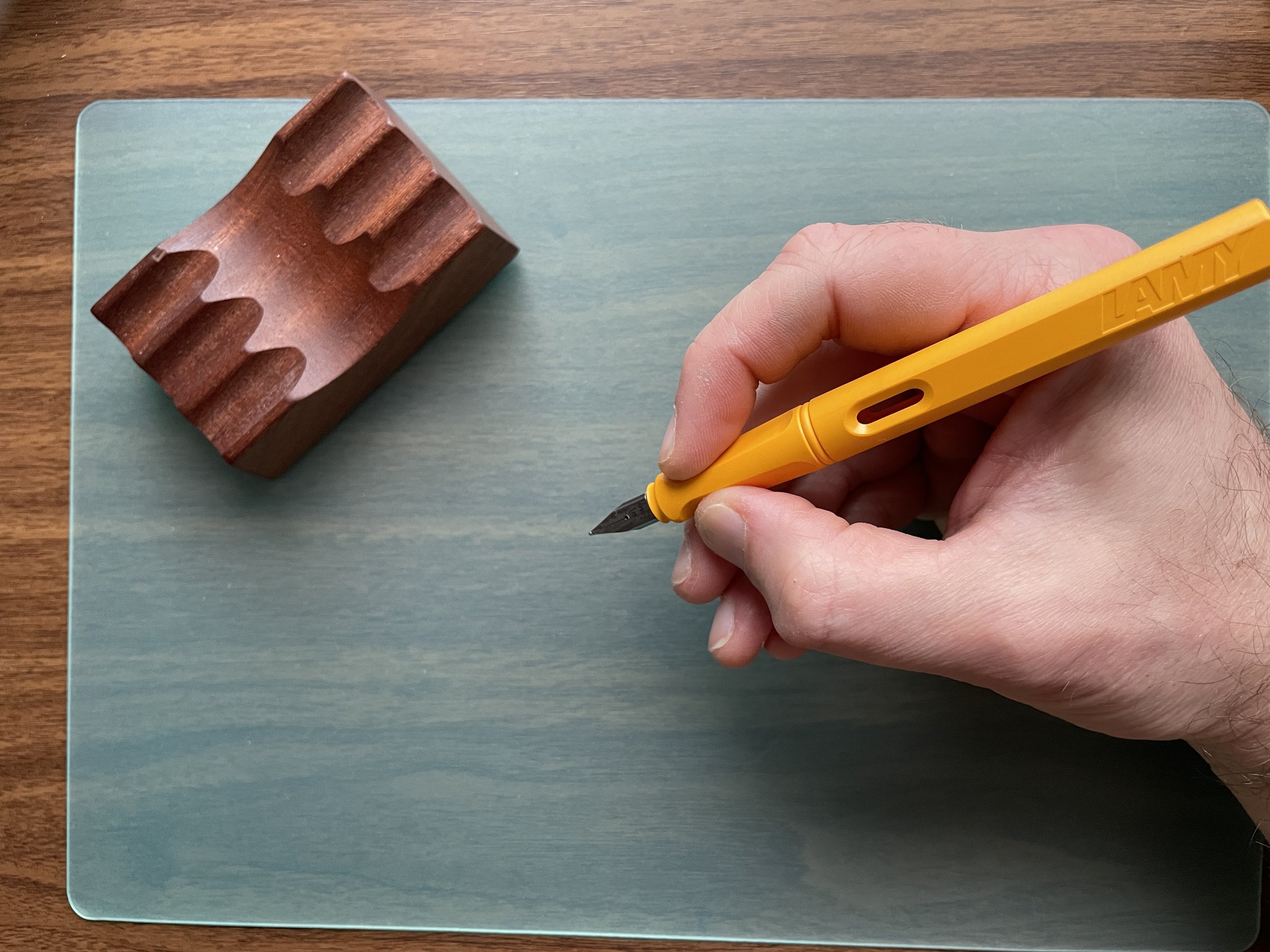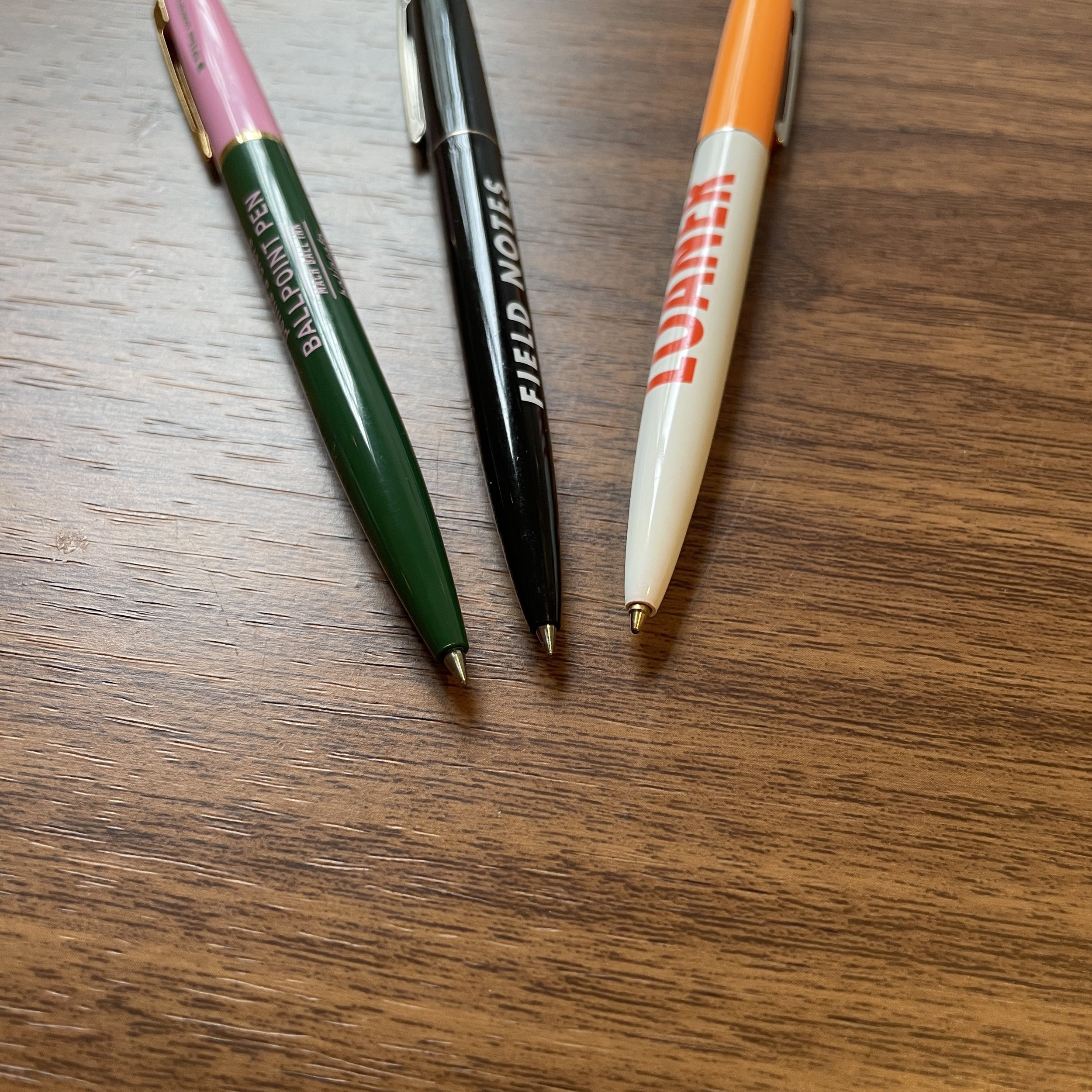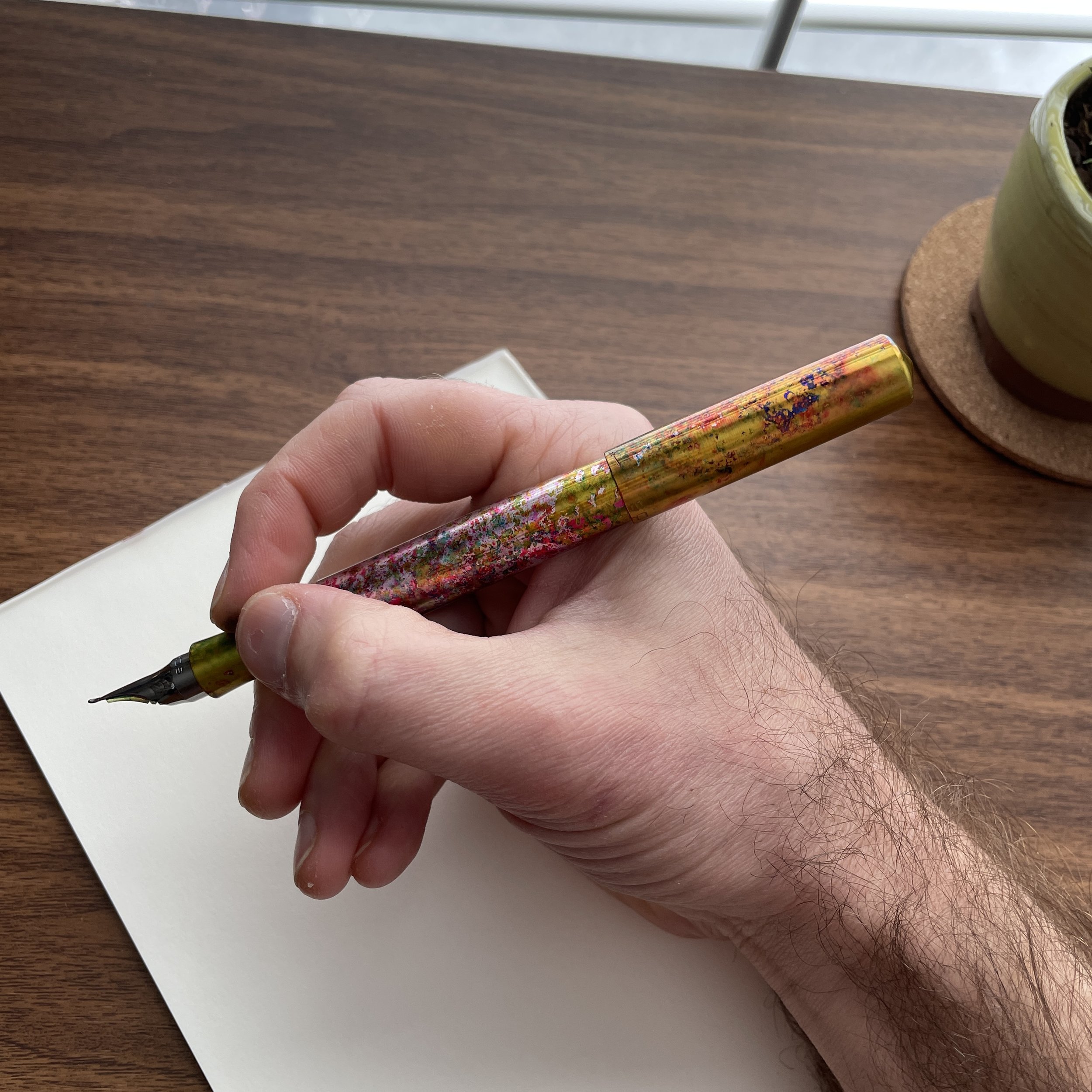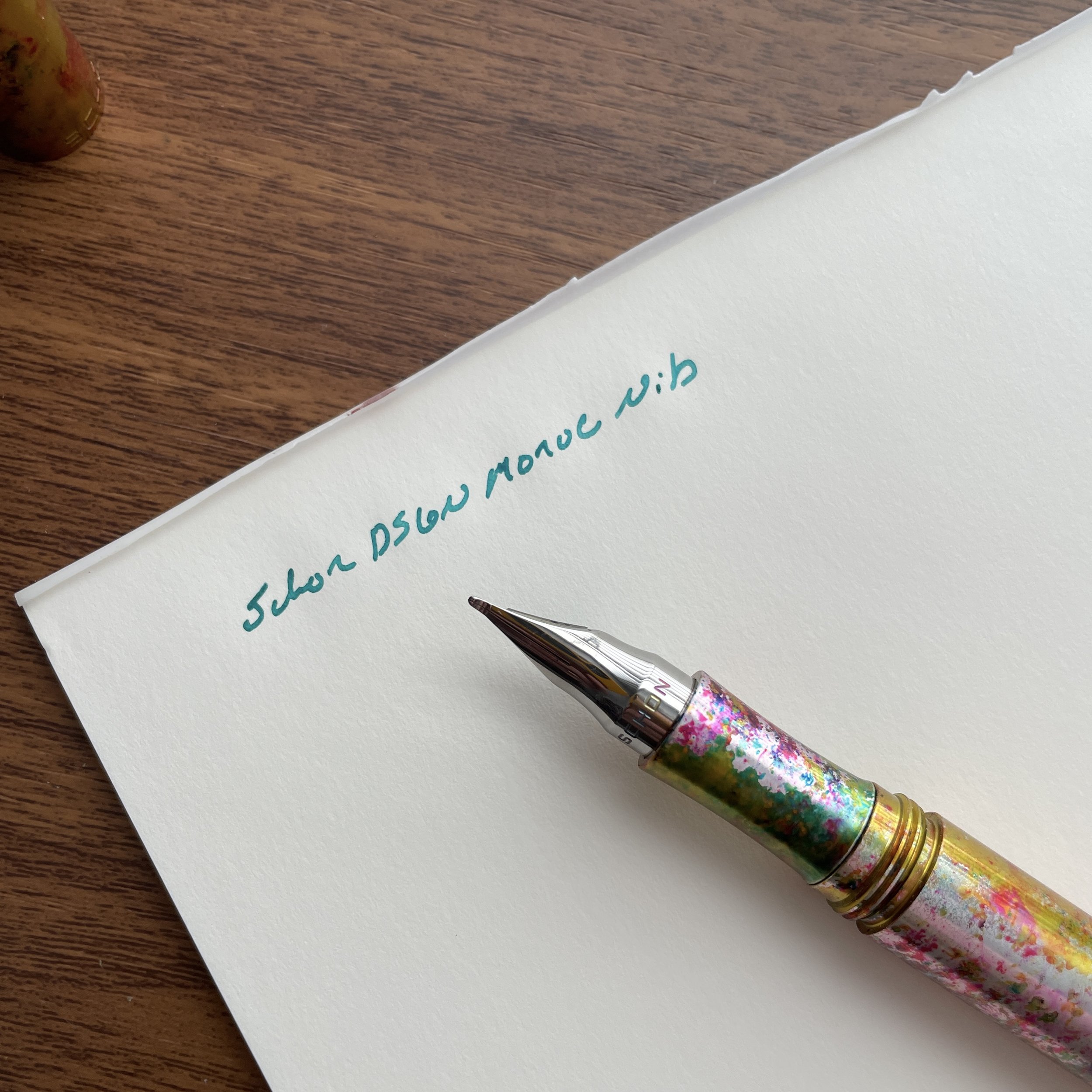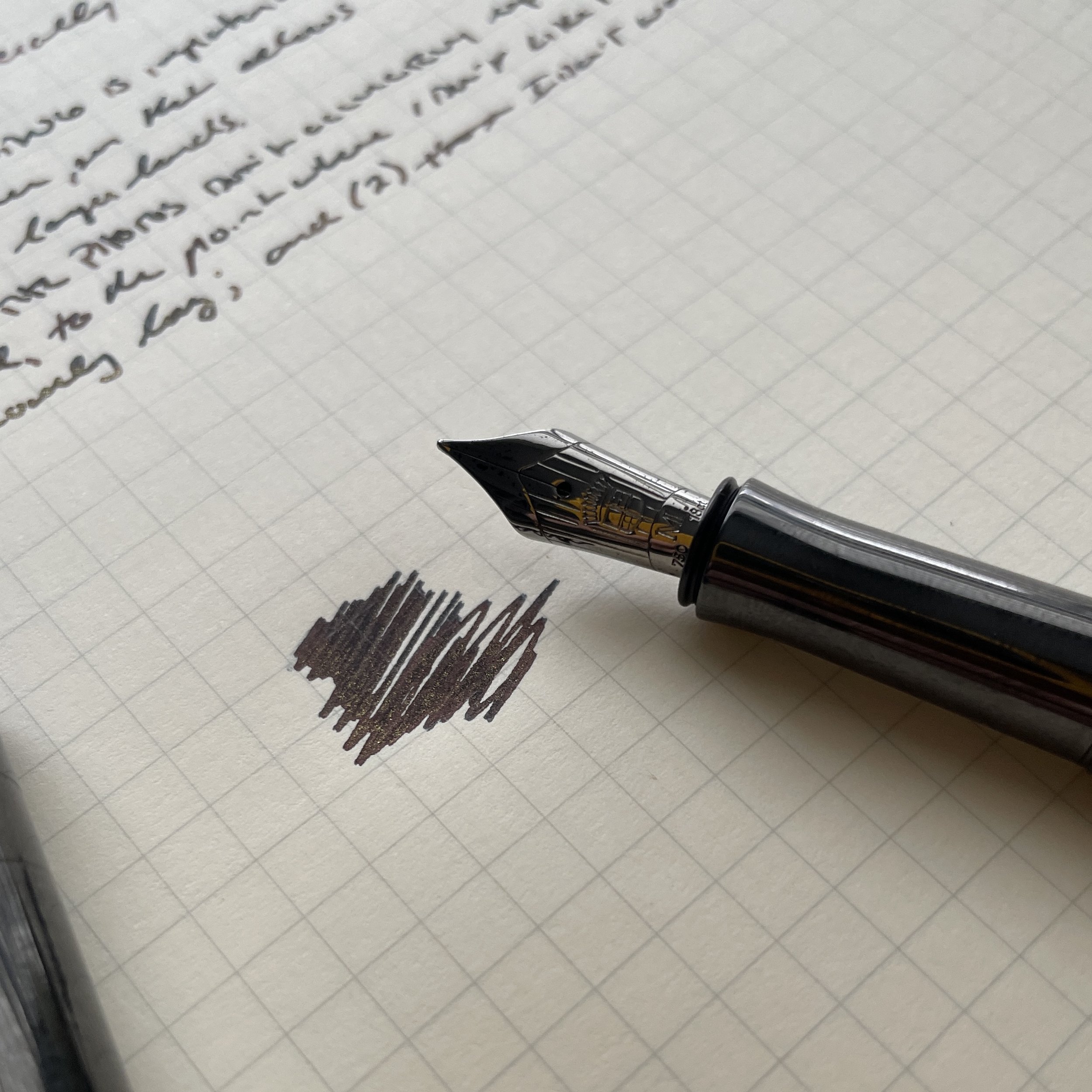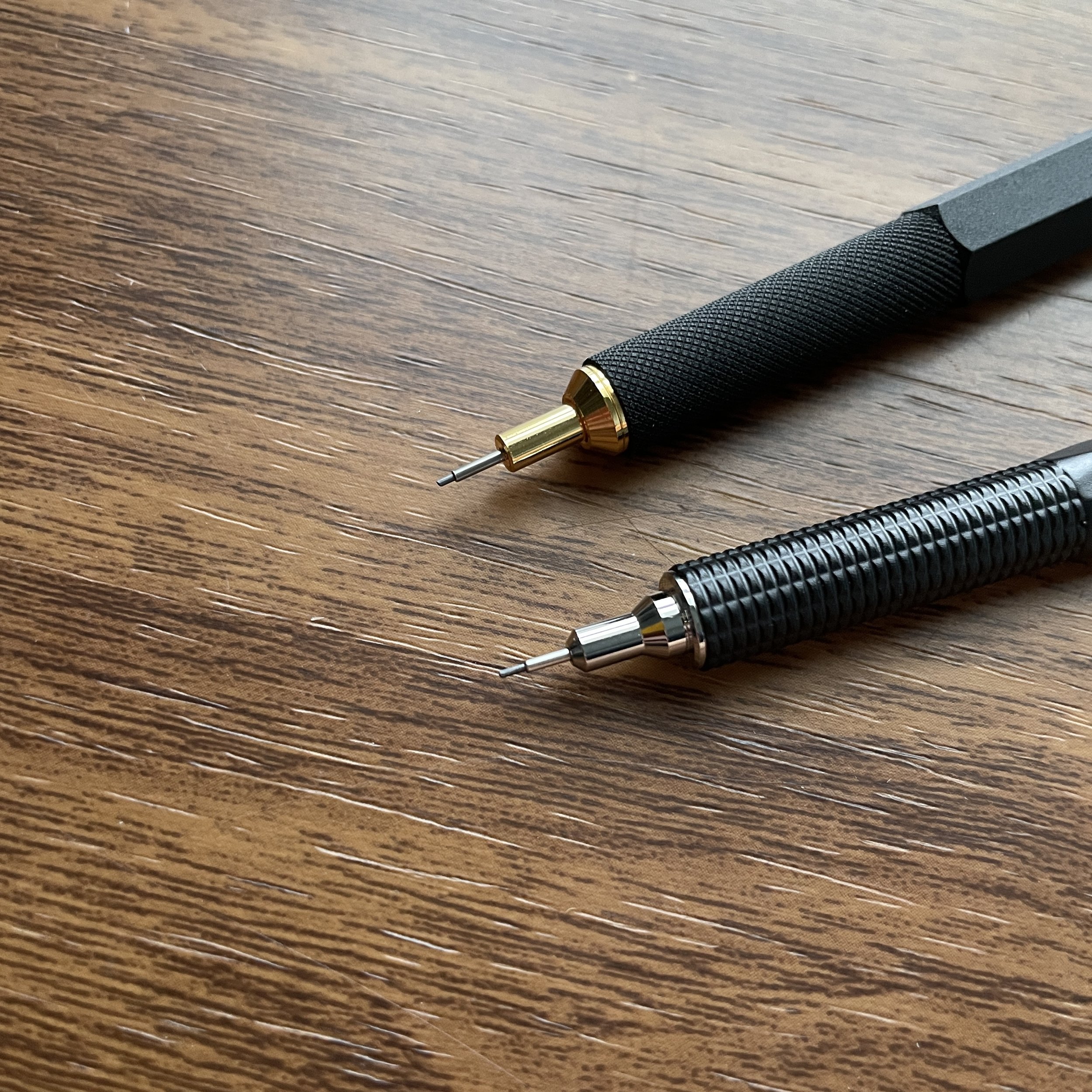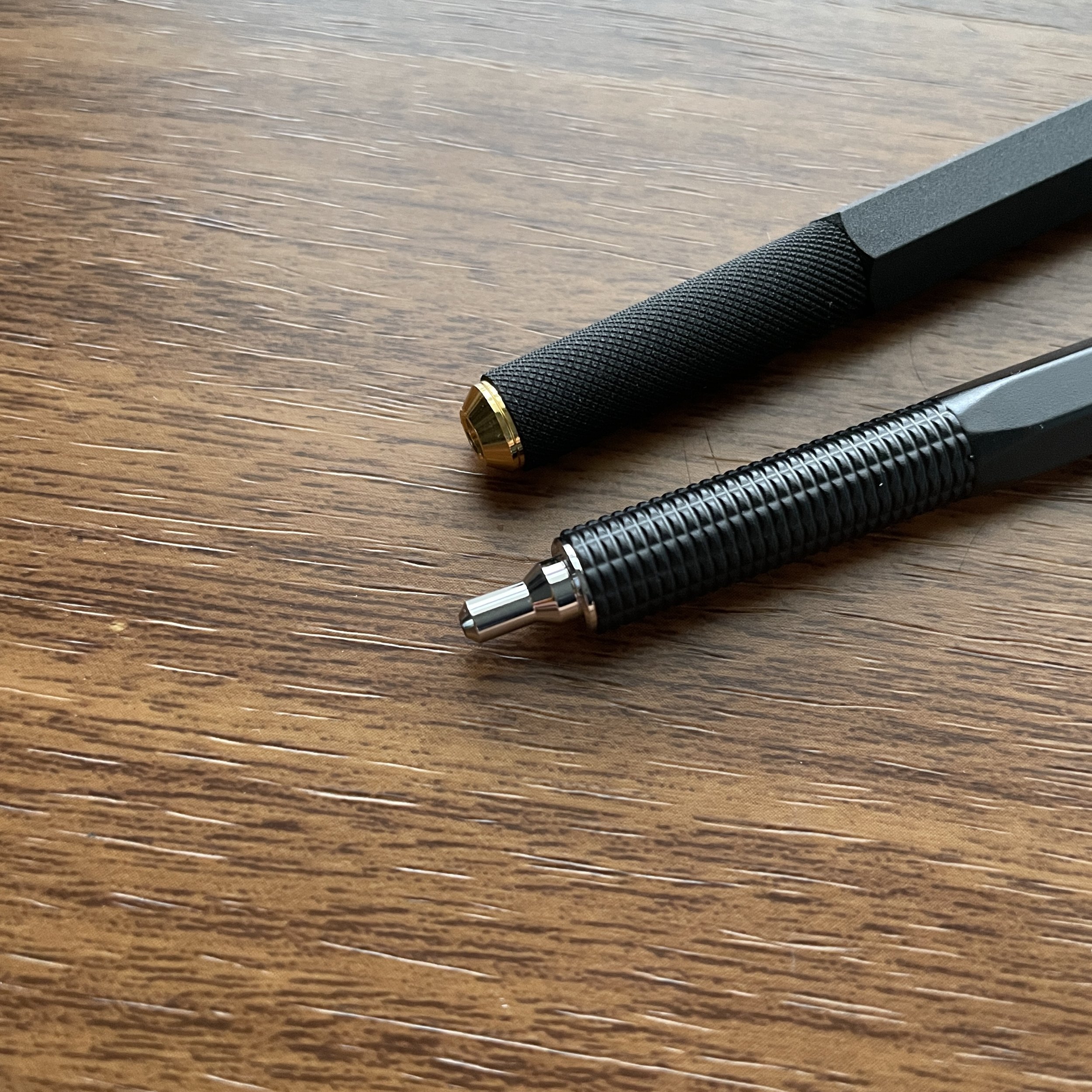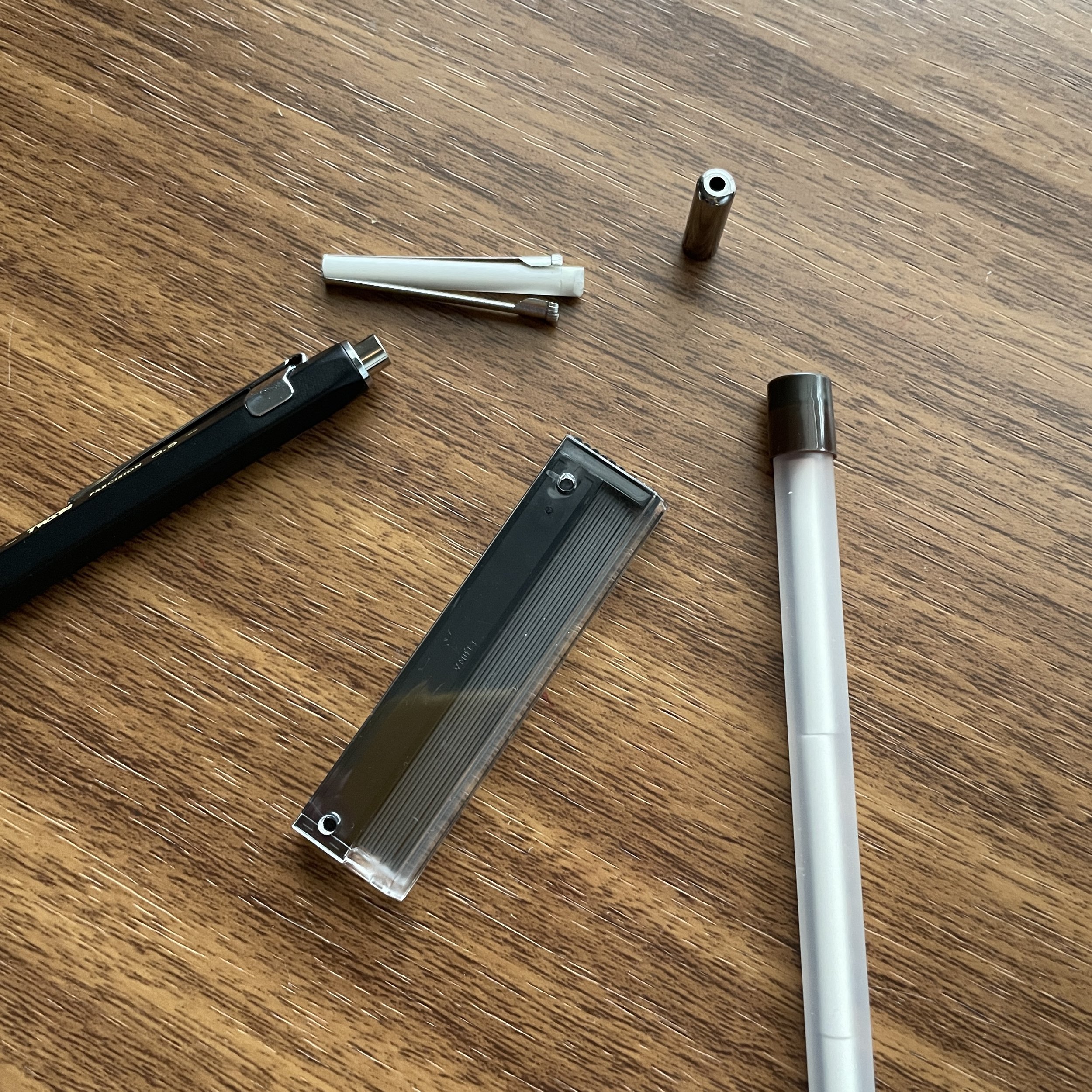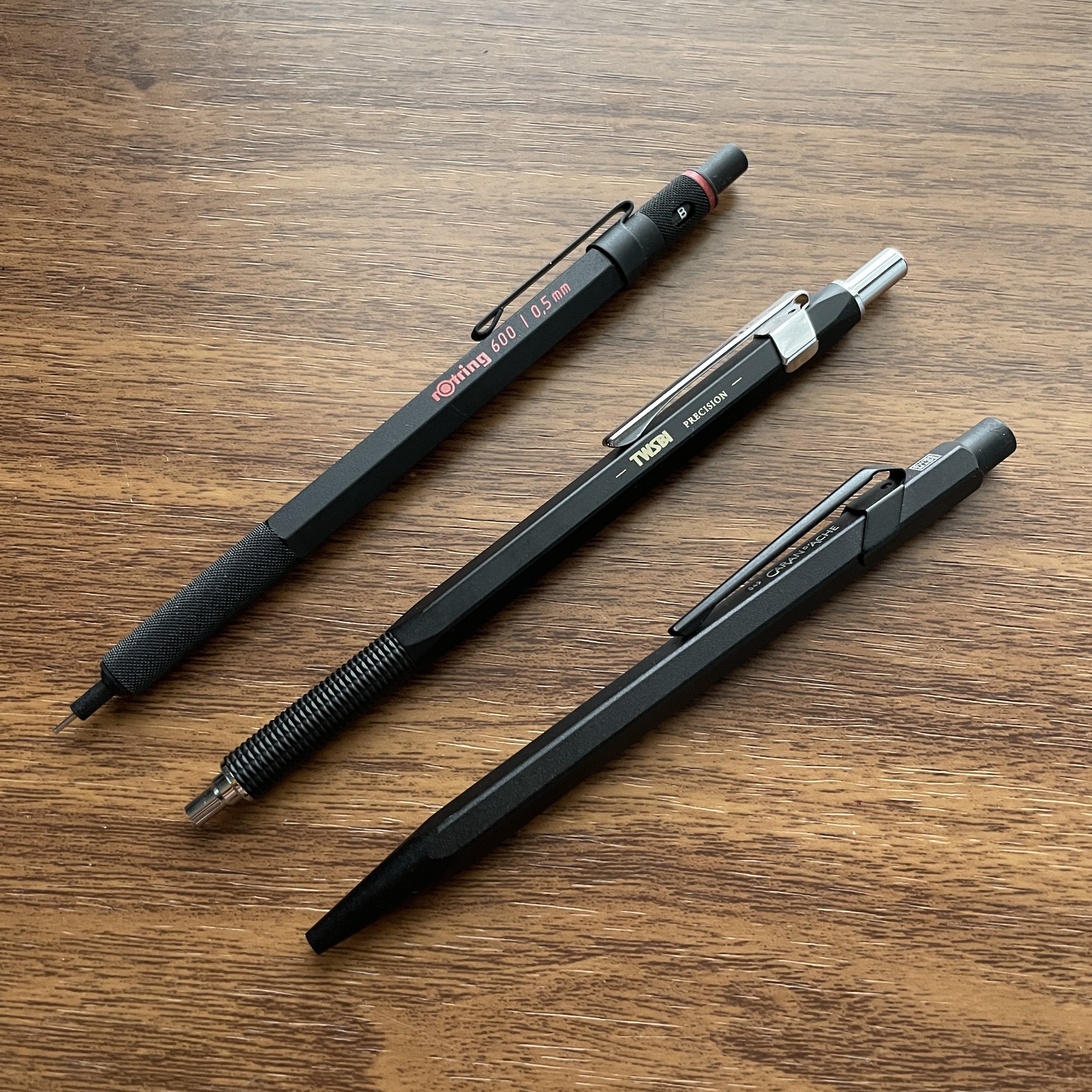In the world of pens, there are a handful of highly polarizing products, and I’d place “molded grip” or “triangular grip” pens in the top five. The most well-known, of course, is the iconic Lamy Safari, with the Lamy AL-Star, TWSBI ECO-T, Kaweco Perkeo and others falling into this category. So why do pen companies opt for this type of design? How big of a “real world” issue is it? And how has it affected my own ability to use these pens?
The Lamy Safari’s grip gives rise to strong opinions.
Triangular Grip Pens: Origins and Purpose
Before they went hipster mainstream (j/k), pens like the Lamy Safari were intended for students - particularly students learning to write with a fountain pen for the first time. Most molded grip sections are shaped similarly to those slide-on pencil grips that teachers in the 1980s would force on those of us who refused to hold our pencils “correctly,” in order to guide our hands into the “proper” position. These days, Lamy markets the Safari/AL-Star pens to a market beyond students, billing the section as an “[e]rgonomically shaped grip area to enable writing for long periods of time without tiring,” but as with most things ergonomic, these pens don’t work for everyone. While I’ve not done any sort of survey, anecdotally, lefties tend to have more issues with the grip, since they’re designed with the right-handed majority in mind. And even those righties with nontraditional finger placement can have a difficult time with a shaped section.
My Own Personal Handwriting Struggles and Preferences
I have a history of handwriting struggles. Until I entered college, I used what could charitably be described as an “unusual” pencil grip. Nobody could understand how it worked, how I learned it, and why I continued to write that way. Despite the fact that I was generally a good student, with visually excellent script, I regularly received a “C” or “D” in “handwriting” on my report card, solely due to how I held my pencil. I had one elementary school teacher dub my grip “The Claw”, and made it their personal mission in life to change it. They failed.
I had another teacher in high school “jokingly” offer to break my right hand so that I could relearn how to write as a lefty. (I went to an all-boys high school. It was a different time.) Honestly, I’m really not sure how I ever wrote like this, much less for hours at a time. I certainly would never have been able to use a fountain pen like this.
At some point The Claw became a matter of personal pride, not to mention practicality. If you grip your pen or pencil a certain way for years, you reach a point in high school where you can’t change it because to do so would sacrifice speed. (To add some context, I graduated from high school in 1998, which dates me but it’s necessary here. I was probably one of the last classes where e-mail and internet access was available to us, but not required, and all of our examinations and most of our homework, including research papers, had to be handwritten as opposed to typed. Handwriting speed was therefore a factor. I understand that this changed at my school a couple of years after I graduated.) It wasn’t until late college/early law school, when I started transcribing most of my lecture notes on a laptop, that I was able to change my grip because I had the luxury of slowing down.
How I hold a pencil today.
So why did I change? RSI issues in my hand and wrist, as well as a semi-deformed right ring finger that had a huge, painful callous that only completely disappeared three or four years ago - nearly 20 years after I changed my handwriting style. While my current grip isn’t “textbook,” it’s closer to what’s contemplated by most molded-grip pens, and if I’m honest, probably could have saved me a lot of trouble over the long-term if I hadn’t been so stubborn.
My new grip works fairly well with the Safari and most other molded-grip pens.
How to Use a Triangular or Molded-Grip Pen
Unfortunately, the truth is that unless you’re willing to change your grip, these pens either work for you or they don’t. Some pens, like the TWSBI ECO-T and the Kaweco Perkeo, feature a “softer” triangular grip that’s much more forgiving. The sharper edges of the Safari and AL-Star tend to cause more problems for people. While the Lamy pens aren’t a perfect fit, and for this reason have never become “favorite” everyday writers, they’re not incompatible with my current grip because I can rest my index finger on the top ridge, similar to how I’m able to rest my finger atop the clip of a Pilot Vanishing Point and Decimo. The good thing is that these pens are relatively inexpensive to test out, coming in at $35 or less. If you’re considering a more expensive pen like one of the retractable nib Pilot pens, I’ve found that how one’s hand holds the Safari approximates how you would have to grip a Vanishing Point or Decimo, so if you can’t get to a pen show and try one of these in person, picking up a less expensive pen with a triangular grip might save you from a more costly mistake.
A shot of the TWSBI ECO-T (right) vs. the standard TWSBI ECO (left). You can barely make out a ridge (more like a ripple) on the ECO-T, which shows you how subtle the shape is. Honestly, I might prefer the ECO-T to the ECO, but again that’s personal preference.
I’m interested in hearing: How many of you can’t use these types of pens at all? Also, I rarely hear from anyone who purchases a pen with a shaped grip specifically for that section, but does anyone particularly enjoy this feature? Personally, I’ve really been enjoying the the ECO-T, which has a much more subtle grip shape, and I have plans to get my hands on another Kaweco Perkeo soon.
The Gentleman Stationer is supported entirely by purchases from the T.G.S. Curated Shop, and pledges via the T.G.S. Patreon Program. While this post does not contain third-party affiliate links or paid advertising, the Gentleman Stationer is an authorized retailer of certain brands discussed in this article. Please view the shop for the full range of brands sold, which is subject to change.
